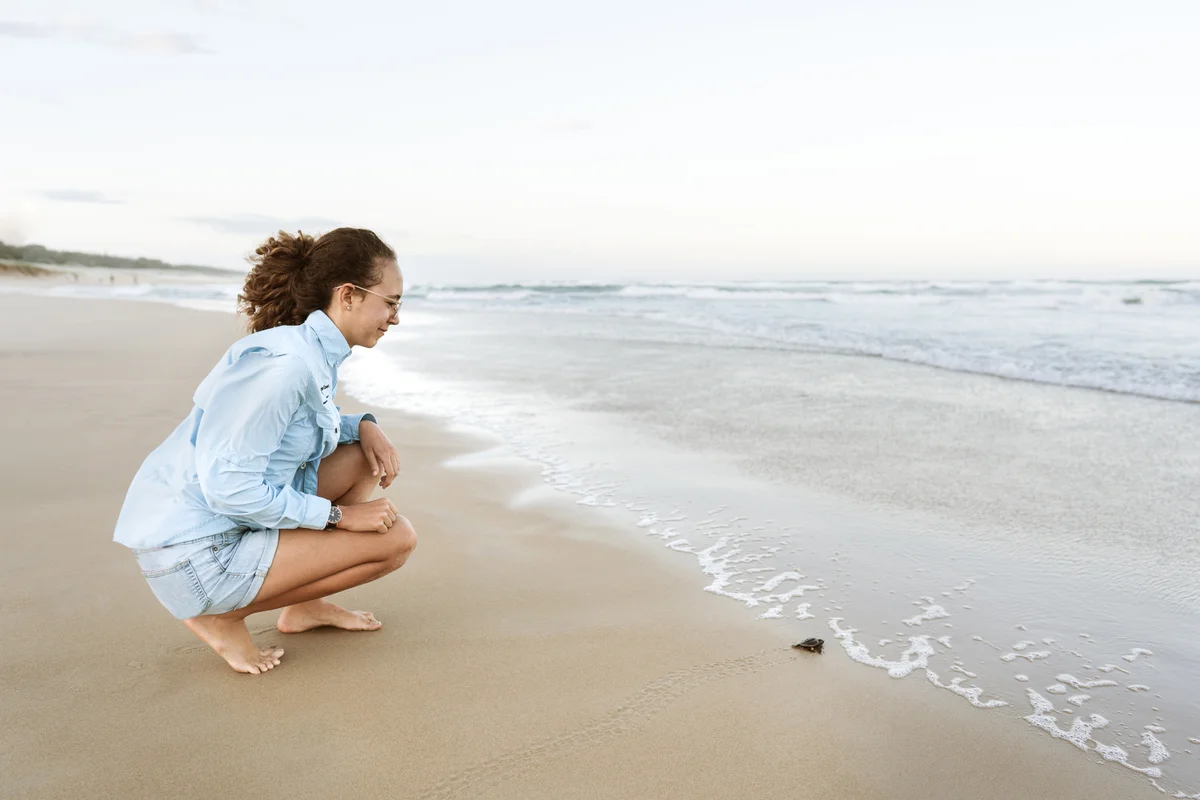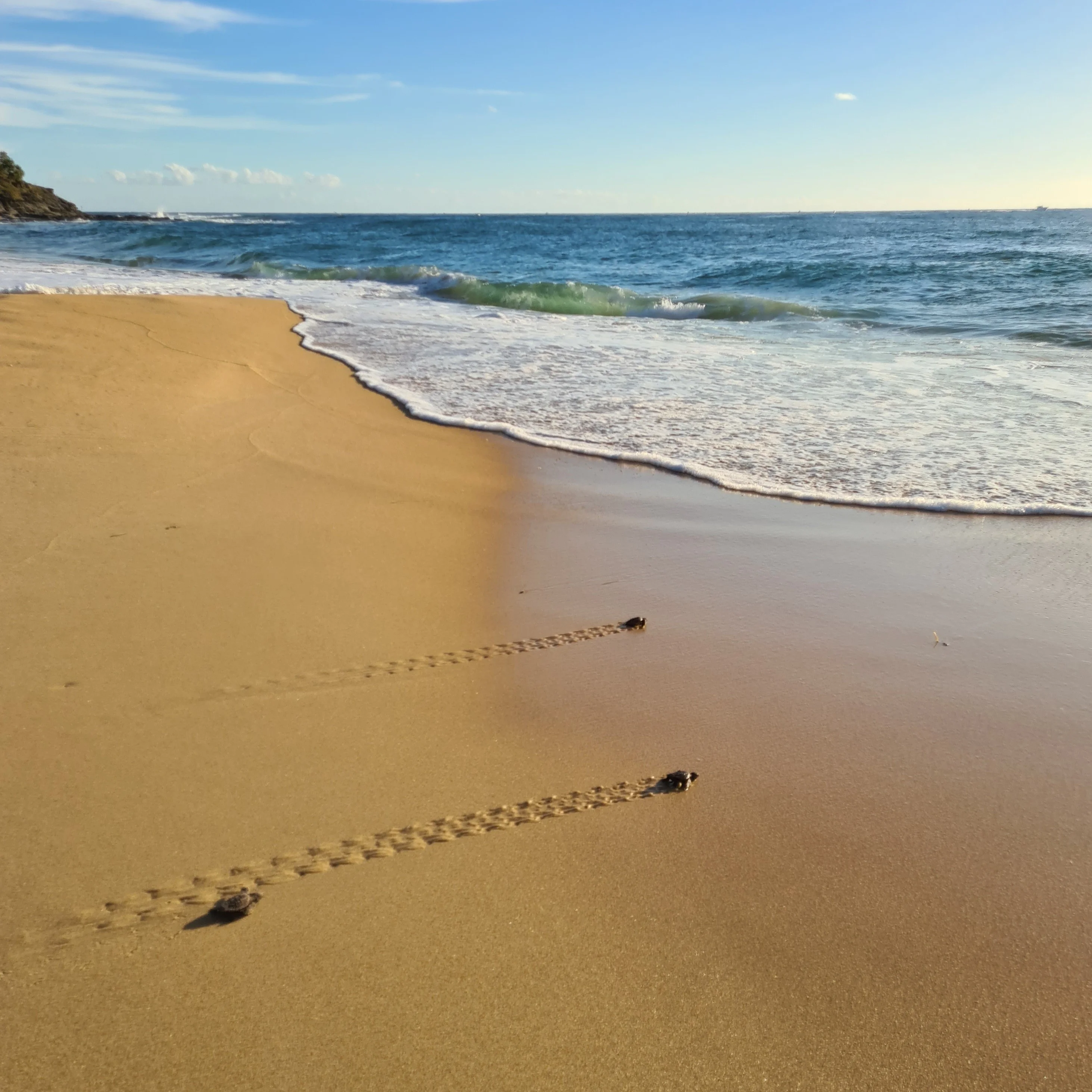Action plan gives new hope to endangered species
A new plan is set to help protect our region’s “ancient mariners’’.

A new plan is set to help protect our region’s “ancient mariners’’.
The Sunshine Coast Marine Turtle Conservation Plan has been adopted at Council’s latest meeting.
It includes extensive input from the region’s turtle champions and outlines Council’s plan for the recovery of marine turtle populations on the Sunshine Coast.
To do this, it will take steps to reduce threats to marine turtles, such as light pollution, and strengthen support of the dedicated community volunteer programs – TurtleCare Sunshine Coast and Coolum and North Shore Coast Care.

Steps to reduce threats to marine turtles
Bright artificial light can confuse hatchlings, leading them away from the sea and leaving them exhausted and even more vulnerable to predators.
It can also be a major issue for nesting mothers, stopping them coming ashore.
Addressing lighting impacts on marine turtles were among the highest priority actions identified by the community during consultation for the plan. The conservation plan will now work towards ensuring existing public lighting in sensitive coastal areas is more turtle friendly.
Solutions include retrofitting light poles with smarter, amber lights or installing light shields that restrict glare.
A toolkit will be prepared for the development sector, local businesses and residents to give practical advice on suitable products and designs to reduce light pollution.
Another positive change will be the development of a locally refined marine turtle dune vegetation plan so the right type of grasses, shrubs and trees are planted in the dunes to create a darker, more inviting and accessible space for turtles to nest.
Strengthening support for turtle champions
Our citizen science program is very popular, and is supported by more than 200 citizen science volunteers.
This plan will also focus on gradually growing the number of turtle-focused citizen scientists through diversifying opportunities and integrating indigenous cultural knowledge.
Another key action of the plan is to build capacity and employment opportunities for the local traditional owners to be involved in marine turtle conservation management.

Council’s Environment and Liveability Portfolio Councillor Peter Cox thanked the community for providing feedback to help protect marine turtles.
“This plan sets us on the right track to help save one of the Sunshine Coast’s most beloved marine animals,” Cr Cox said.
“Generally, the community feedback on the draft plan aligned with Council’s position and had a strong call to address light pollution for turtles.
“By implementing our threatened species management plans, such as this one, we are protecting and enhancing our natural landscapes and its inhabitants and delivering on the Sunshine Coast Environment and Liveability Strategy.”
Actions were added to the plan to address potential threats to turtle populations through willful vegetation damage and disturbance from dogs off-leash.
What council is doing now to protect turtles
Cr Cox said Council was already working to protect turtles on the Sunshine Coast.
“It won’t be until 2035 that we will start to see the benefits of our long-term investment in turtle conservation and the amazing annual work of the three turtle citizen science groups within the Sunshine Coast rookery,” Cr Cox said.
“We have the amazing TurtleCare citizen science program keeping a watchful eye on our nesting mothers and hatchlings, with Coolum and North Shore Coast Care in the north and Bribie Island Turtle Trackers in the south.
“There are four light reduction projects underway including a project to retrofit public lighting at Shelly Beach, a turtle lighting co-design for behavior change program, a study into hatchling behaviour and glass tinting and a pilot ‘Trees for Turtles’ planting event.
“Council will also trial a community-led project called TurtleCare Hatchlings to engage the region’s youth in turtle conservation activities.”
About the marine turtle plan
A strong partnership across the region led to the plan’s development with Sunshine Coast Council, councillors, Kabi Kabi First Nation Peoples, Queensland Government, an independent Technical Advisory Panel and community leaders of TurtleCare, Coolum and North Shore Coast Care and Bribie Island Turtle Trackers volunteers all collaborating on the plan.
It supports efforts by the Queensland and Australian governments to stop the decline of marine turtle populations and will guide Council decision making to achieve future conservation and management goals for nesting marine turtles and hatchlings within the Sunshine Coast Local Government Area.
It is particularly focused on the nesting and hatchling success of the critically endangered loggerhead and vulnerable green turtle populations—the two species that arrive every year to lay their eggs on our Sunshine Coast beaches.
Its goal is to support the recovery of self-sustaining populations of marine turtles on the Sunshine Coast by reducing threats, improving habitat quality and strengthening community-based management.
The implementation plan will be reviewed and updated annually.
View the adopted Sunshine Coast Marine Turtle Conservation plan.
A full summary of the feedback received during community engagement and Council’s response is available at haveyoursay.sunshinecoast.qld.gov.au.